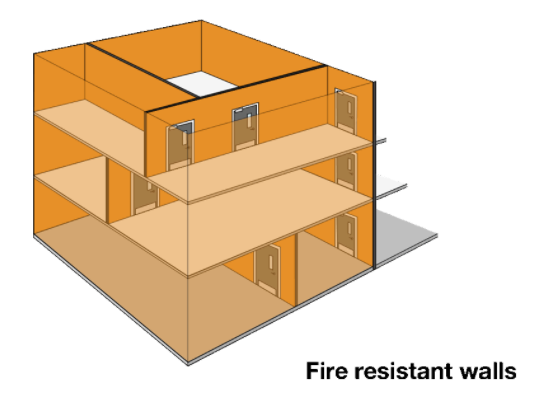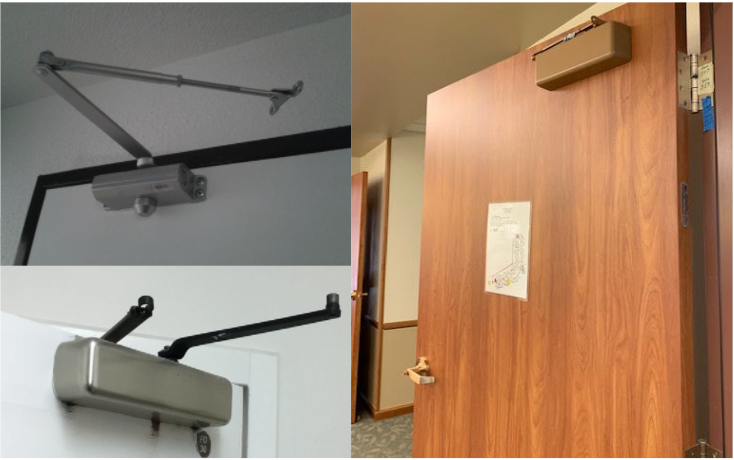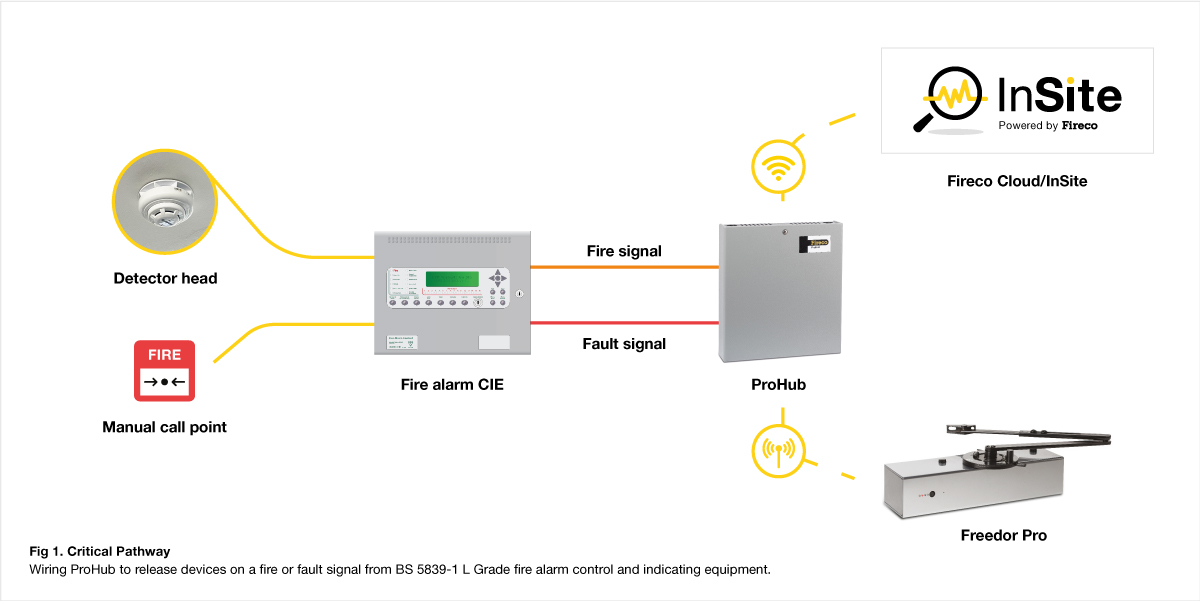It’s not easy to write about actual fires. Where lives have actually been lost. It’s a sensitive subject, after all. I don’t enjoy it. No doubt there’ll be some who will (I would say somewhat cynically) assume that, by doing so, one is taking advantage of a tragedy, using the suffering of others for commercial gain. The simple fact of the matter is, I work in a specific area of fire safety where the conditions that allowed the devastating fire at Twin Parks, a block of flats in The Bronx, NYC, to quickly spread throughout the building, are presented to me over and over again.

Compartmentation provided by fire-resisting walls, doors and floors.
Now some are trying to blame the fire on a faulty space heater (let’s not even get into why tenants were having to use them in the first place). Let’s be totally clear here; if effective, well-maintained compartmentation is in place, from a passive fire perspective, the cause of the fire shouldn’t matter. The building should be able to contain the fire long enough for the fire service to deal with it or for the building to be evacuated.
For others, the only lesson being taken away from this is the importance of remembering to close doors behind you. I don’t know if I agree that anyone should be expected to remember to close doors behind them when evacuating a burning building. Is that a reasonable expectation? Is this the mindset that anyone expects people to be in when that little adrenaline rush from our ‘fight or flight’ response has kicked in? Maybe we’ve lost sight of why automatic door closers are supposed to be fitted to doors in the first place?
And here we come to what I believe to be the crux of the matter. Dan Nigro, the Fire Commissioner for NYC reported that “The door to that apartment… unfortunately when the residents left, it was left open, it did not close by itself.” Why? Why was there no closer on the door? Is it possible that one wasn’t provided? Was one provided but removed because it made getting in and out of the apartment really difficult, and is this a behavior that we want to see? Of course not. But when constantly faced with those annoying lumps of wood that we have to open in order to get into the place they live, to the unsavvy, removing that closer suddenly seems like a really smart idea.

Disengaged door closers – the new door wedging?
Now I’ve written about this before. I’ve written about how, in the housing sector, damaged, disengaged, or missing door closers are becoming a major problem as residents take matters into their own hands in order to deal with daily struggles around getting in and out of their flats. I’ve written about the fact that many of our customers over the last 12 months, both public and private housing providers, have told us that between 35-40% of their general needs housing stock suffer from these issues. I’ve even written about how these issues have been identified as a contributing factor to the spread of fire at Grenfell, with “Testimonies of residents from 81 different flats in the tower show 46 of them – 56% – describe problems with fire doors, the vast majority of these referring to missing ‘self-closing’ devices”.
So once again, I find myself thinking that we need to start using free swing devices (which bypass the resistance/closing mechanism until they receive a suitable signal from a fire alarm) on flat entrance doors. Not just for people with disabilities or reduced mobility, but for everyone. Because everyone is inconvenienced by heavy fire doors. Struggling to get into one’s apartment is not exclusive to the elderly or those that rely on mobility aids such as walking sticks or frames. They irritate people of all abilities and age ranges. Fire doors do not discriminate. They bully everybody.
But in premises where sufficient alarm and detection, required as part of the mechanism of actuation, is non-existent, how are building owners supposed to achieve the required level of compliance? In the UK, BS 7273-4 requires flat entrance doors to be part of a critical system. This means that any free swing devices fitted to these doors need to be able to fail safe on a fault signal from the fire alarm panel. In a majority of social housing premises, especially high-rise blocks of flats, there is no alarm and detection, other than the individual smoke detectors in the flats themselves.

‘Critical’ or ‘CAT-A’ compliance requires relevant alarm and detection equipment.
This makes finding a compliant solution for those areas tricky, with BS 7273-4 already known for being an awkward standard to comply with. Maybe, if the ‘Responsible Person’ has had one installed, other detection equipment such as sprinkler or AOV systems, could be used to actuate the devices. This means that, assuming that relevant detectors are in the individual accommodations themselves, you could use these systems to actuate free swing devices on flat entrance doors. And whilst some local authorities are hot on having sprinklers installed, there is an equal, if not greater number that don’t.
Perhaps a variation would be more ‘reasonably practicable’? After all, Clause 6 of BS 7273-4 allows for variations to the recommendations of the standard, subject to a suitable risk assessment, approval from all interested parties (the Responsible Person, the resident, the Premises Manager, the Installer, the local fire authority etc), and requires the variation to be noted on the commissioning certificate. All sounds fairly simple, right? The problem is, even though more and more people are embracing variations where they offer a viable solution, there are some that remain scared of thinking that far outside of the box.
The funny thing about variations though, is that when they’re done properly, they are extremely effective and help to mitigate larger risks. I know they work because I’ve seen it. Yes, it is a process. No, it’s not simple to variate from the standard, and yes, it will probably be slightly more work to implement it. But things that are worth doing rarely come easy. And surely it’s better than the alternative? It must be better to have a device on the door, that through proper risk assessment and commissioning is proven to work and closes doors safely, rather than have a non-compliant door that can’t or won’t close?
As has been made very clear, if we continue to ignore this issue, or allow perceived non-compliances to hinder our attempts to deal with the root cause of damaged, disengaged, or missing closers, then I fear that I’ll continue to be unsurprised by events like those at Twin Parks or Grenfell. And I’ll continue to shout about it as loudly as I can. If you would like to know more about variations or would like to offer an alternative solution to this issue, or even if you just want to tell me I’m wrong, I would love to hear from you.
pete.davies@fireco.uk





0 Comments